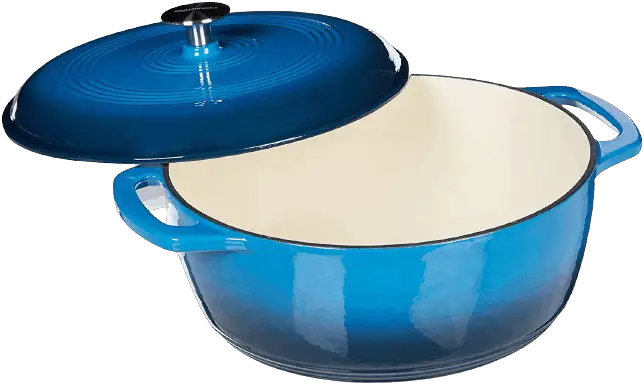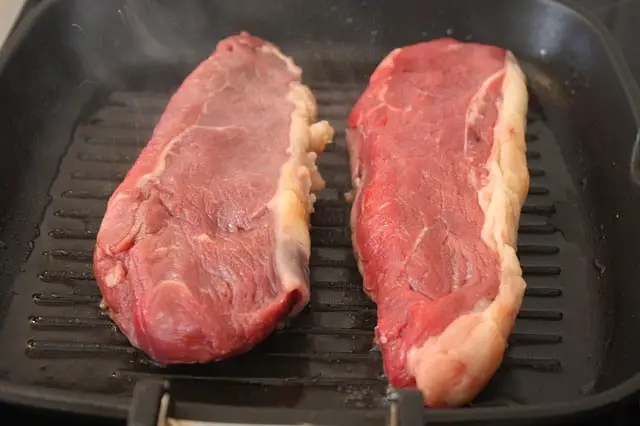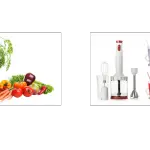Dutch ovens and roasting pans are both cookware with specific purposes. Dutch ovens are usually used for slow-cooking recipes, while roasting pans are designed to be placed in an oven at a high temperature. But how do you know which one to choose?
The answer depends on what cooking technique you’re looking for as well as the type of food you plan on preparing.
What is a Dutch Oven?

A Dutch oven is a cooking pot with two short, thick handles that are designed to hold heat in the pot.
The lid is often domed-shaped and has little ventilation holes so that steam can escape as it cooks food inside.
Dutch ovens have been known for their durability – they were originally made out of cast iron or steel before some companies started making them out of aluminum and nonstick materials like enamel.
Dutch ovens are typically used on top of an open fire or gas stovetop because they retain heat well, but you can also place one directly into the coals from a campfire if necessary.
You should avoid using these pots over high flame unless there’s plenty of space between the heating element and your preferred vessel.
What is a Roasting Pan?

Roasting pans are typically round with a flat bottom and straight edges that come up to the top of the pan’s sides.
They’re usually metal, but sometimes they can be ceramic or glass for roasters who want something lighter-weight.
These pots have one large handle on either side so users don’t need to pick them up by their lid; this makes it easy to rotate food while cooking without spilling anything out over the rim of the pot.
Roasting pans can also double as bakers – just line the base with parchment paper before adding your batter and filling in any air gaps with aluminum foil around its circumference (this is called “baking blind”).
You may find that these containers work better than Dutch ovens if you’re cooking something like an eggplant Parmesan or a lasagna.
What is The Difference Between a Dutch Oven And a Roasting Pan?
Dutch ovens are smaller than roasters. Smaller cuts of meat are better cooked in a Dutch oven. Larger cuts of meat can be cooked in roasting pans.
Dutch ovens are suitable for braising and stewing, while roasting pans tend to be better suited for cooking tougher cuts.
Roasters can allow more air circulation through the food because of their open design. Dutch ovens have a heavy lid that makes them ideal for slow-cooked dishes.
If you’re planning on making something like lasagna or pot pie, then go with a roasting pan since they both require browning in an oven first before finishing off slowly in the oven at low temperature (and this is also true if you want crispy skin on your chicken).
If you want to make delicious roast potatoes then choose a Dutch Oven – they cook faster than other long cut vegetables so it’s important not to let these ones overcook.
Roasting pans and Dutch ovens are both very versatile, so the best way to decide which one is right for you is by thinking about what types of dishes you want to make most often.
Dutch Ovens are suitable for long cooking times because they don’t usually allow too much air circulation through the food
This makes them ideal for slow cooked dishes like stews and soups. Roasters can also work well during shorter periods of time since there’s more room in an open design.
Dutch Oven or Roasting Pan – Which is Best For You?
If you’re going to cook large cuts of meat on a regular basis, investing in a large roasting pan may be the right decision. If you don’t expect to cook large cuts of meat on a regular basis, a dutch oven is probably a safe bet.
And If your answer includes dishes like roast chicken or pot pie then a roaster would be better for these recipes while if braising or stewing come up as easy ones then go with a dutch oven instead.
Depending on the type of dish you’re cooking, one pan may be easier to clean than another.
For example a roaster might require more scrubbing with soap and water if any liquid is left behind while a dutch oven will probably only need to be wiped dry after use.
One thing that can’t go unmentioned is, If your kitchen gets hot during extended periods of time an open pan like the roaster would do better since there’s less chance for trapped heat inside and You’ll get evenly cooked meat every time.
Can You Use a Dutch Oven Instead of a Roasting Pan?
Dutch ovens are not specifically designed to replace roasting pans. They are an excellent substitute for a specialist roaster.
If you follow our instructions and use the right sized dutch oven for your cut of meat, you can still pull off an excellent meal. There are the same rules for a cast iron pan. A whole chicken can be cooked in a dutch oven.
What Can I Use Instead of a Dutch Oven For Bread?
A metal soup pot is a good choice. A loaf of bread can be baked with aluminum foil. It’s safe to use an oven to cook it in a large pot or dish.
Dutch ovens offer many benefits over roasting pans. They’re the perfect option for slow cooking, braising and baking in a home kitchen because they do not conduct heat as quickly or efficiently as some other pots can.
Dutch ovens are also much easier to clean than traditional roasting pans due to their design with two handles on either side of an open top;
This makes them much more comfortable to move around without having to worry about spilled liquids making messes everywhere.
And finally, there is virtually no risk that food will stick thanks to just how well these cookware options scrape up until nothing
Can a Roaster Pan be Used Like a Dutch Oven?
A Dutch oven can be used to roast and bake just about anything, but a roaster pan may not have the same versatility.
Roasters pans are typically designed with sloped sides for liquid to drain off into a drip tray underneath that gets cleaned out after use;
This might work well if you were cooking something like vegetables or brown rice where it doesn’t matter too much what goes down the side of the pan.
For meats though, there’s no chance that liquids will come close to escaping through those sloped sides – which means more mess when it comes time to clean up!.
Plus, because these pots are made from aluminum instead of cast-iron they don’t conduct heat quite as efficiently so your food is less likely to cook evenly.
What Else Can be Used Instead of a Roasting Pan?
A dutch oven is a versatile pot that can do everything from soups to stews, braises and coq au vin.
If you want to roast meats or vegetables the best option would be to buy both pots – one for cooking on top of the stove and one with sloped sides for roasting in the oven.
Roasters come in a variety of shapes. The most popular shape is the rectangular roasting pan, which typically has sloped sides and a lid.
To Finish – Do I Really Need Both?
If you don’t roast a lot, buying a dedicated roaster is probably not a good idea. If you don’t roast very often in your Dutch oven, buying a dedicated roaster is probably a waste of money.
Buying a dedicated roaster is probably not a good idea if you don’t roast very often.
Both Dutch Ovens and Roasters are versatile tools in any cook’s arsenal – they just happen to work well depending on what kind of dishes you plan to make regularly.
